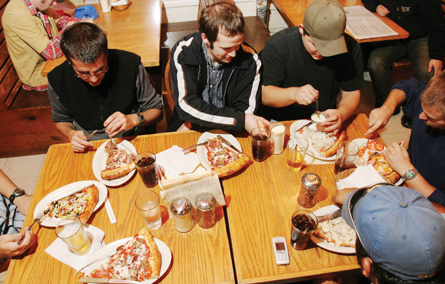Module 5 Intro
1. Module 5 Intro
1.29. Lesson 6 Intro
Module 5—Photosynthesis and Cellular Respiration
Lesson 6—Aerobic Respiration
 Get Focused
Get Focused

© Kevin Russ/iStockphoto
In Unit A you explored how the energy people get from food starts with solar energy. You should also understand that solar energy is stored as glucose through the process of photosynthesis. Plants do not produce starches and sugars just to feed animals—they use the compounds they produce for their own energy needs, such as growth, repair, and the completion of chemical reactions involved in other cellular processes.
However, plants do provide the energy and oxygen humans and other organisms need by storing complex carbohydrates and producing oxygen. The following chart shows some of the uses of energy.
|
Use of Energy |
Explanation |
Voluntary Actions |
Motion |
Organisms need energy to make their muscles contract. This allows them to walk, fight, make noise, and run. |
| Involuntary Actions | Breathing |
Organisms need energy to contract muscles in and around their lungs to breathe. |
Thinking |
Organisms need energy to activate nerve cells in their brains. |
|
Growth |
Organisms use energy to make enzymes and to activate chemical reactions that build new cells. These new cells will result in growth. |
|
Repair |
Organisms use energy to repair or replace cells that are damaged. |
|
Active Transport |
Organisms need energy to transport materials throughout their cells and bodies. |
Before riding a bike or being active in some other way, do you think about how the carbohydrates/sugars you consume and the oxygen that you breathe become part of the energy pathway that supports your activity?
In this lesson the following essential questions will be explored:
- How does the presence of oxygen affect cellular respiration?
- How does aerobic cellular respiration release potential energy from organic compounds?
 Module 5: Lesson 6 Assignment
Module 5: Lesson 6 Assignment
Your teacher-marked Module 5: Lesson 6 Assignment requires you to submit a response to the following:
- TR 1. Comparing Chemiosmosis in Photosynthesis and Cellular Respiration
- TR 2. Estimate Your VO2 Max
You can access your Module 5: Lesson 6 Assignment. You can print off the assignment or save the download to your computer. Your answers can be saved on this document to your course folder.
You must decide what to do with the questions that are not marked by the teacher.
Remember that these questions provide you with the practice and feedback that you need to successfully complete this course. You should respond to all the questions and place those answers in your course folder.